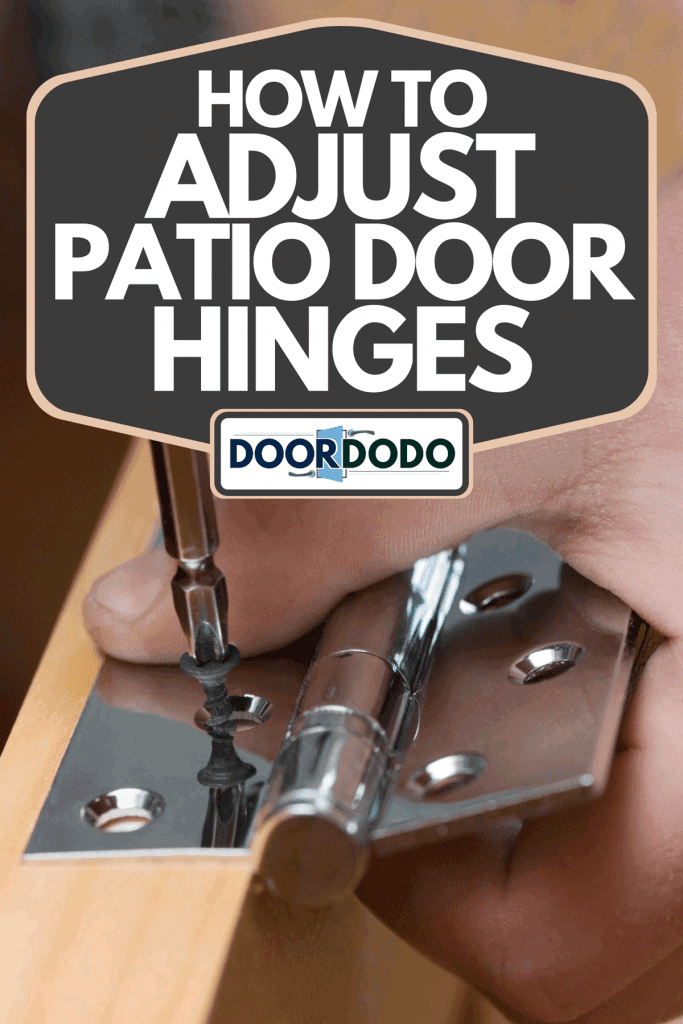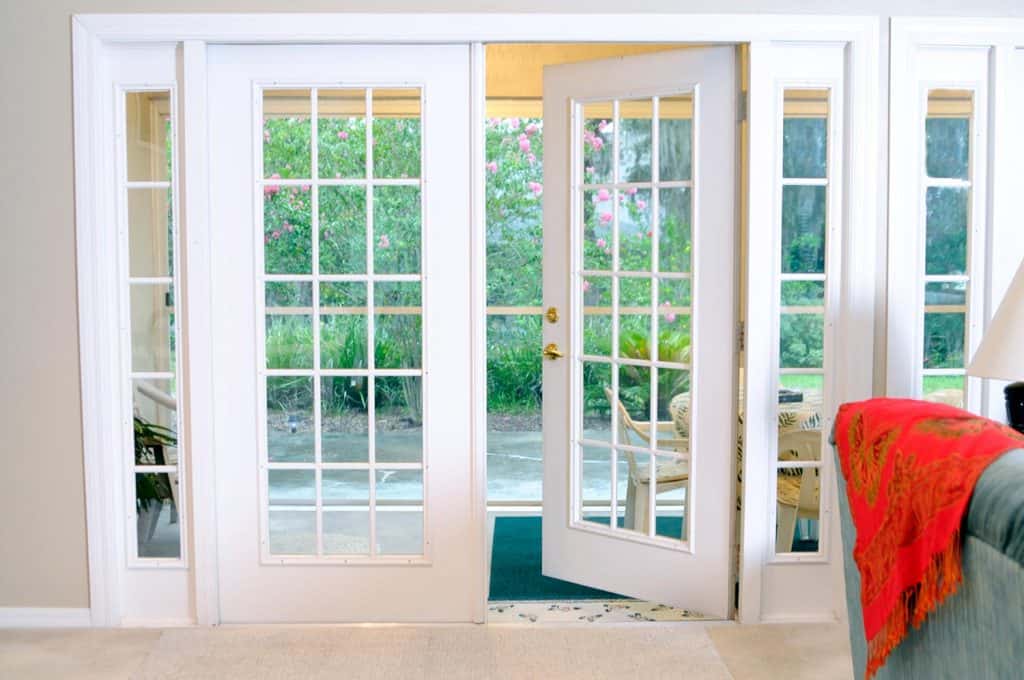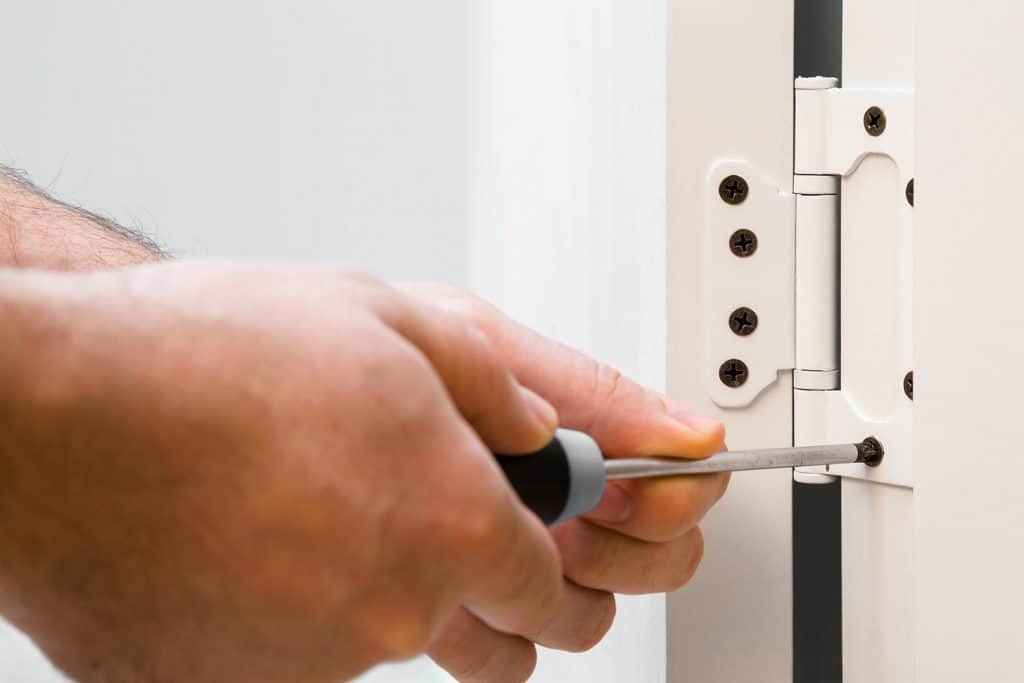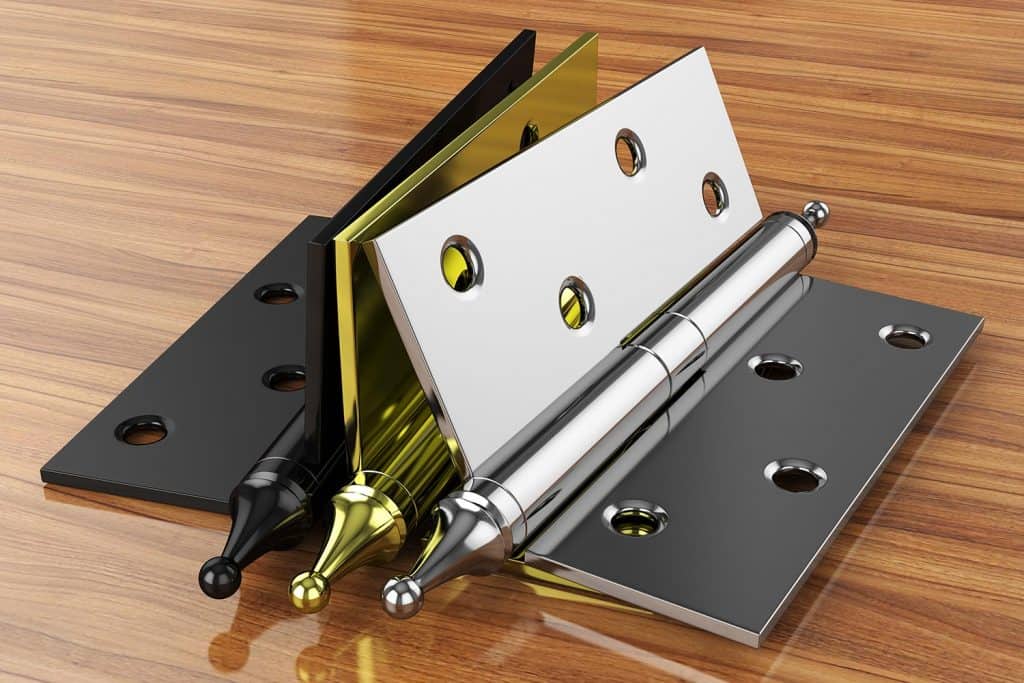Patio door hinges that are loose or sag can lead to serious problems. For instance, the doorway can drag across the floor, creating scuff marks. A misaligned patio door can also drop since the hinges might not handle the door’s weight and gravity’s pull. So how can you adjust the hinges on a patio door? We consulted DIY and industry experts and here’s what we found.
The correct methods to adjust patio door hinges generally depend on the direction of the misalignment. But these methods often follow similar steps such as the following:
- Measure the awkward distance between the leaf and frame.
- Remove the plastic covers securing the adjustment screws on the hinges.
- Turn the screw clockwise or counterclockwise, depending on the fine-tuning requirements.
- Return the plastic covers and test the door’s functionality if it still encounters problems.
Take note that you may need to follow some specifics if you want to adjust a patio door horizontally or vertically. Keep reading to know about these details, along with other topics like the types of uPVC door hinges and how to restore a proper alignment of a dropped uPVC door.

Ways To Adjust Hinged Patio Doors
Hinged patio doors, or French patio doors, need proper adjustment to open or close inward or outward from the center. Any misalignment from the hinge can cause different issues, including draught and improper insulation.
In this section, you’ll learn how to adjust the hinges of a typical patio door.

What You’ll Need
- Allen wrench
- Tape measure or steel tape
- Stepladder (optional)
Preparation is important to tackle a patio door alignment repair job. At this point, you may also consult the help of another individual to help carry the door’s weight if needed.
Also, you might need a stepladder, especially if the top hinge is beyond your reach. We’ll tackle each adjustment method in greater detail by showing you a step-by-step guide for each procedure.
Diagonal Casement Correction
Do these steps if your patio door’s leaf is hitting the doorframe:
- Use a tape measure, steel tape, or other similar measuring devices to inspect the distance between the leaf and frame.
- Take away the plastic covers from the corner bearings at the lower hinge.
- Adjust the hinge by turning the corner bearing screw clockwise to lift the leaf or counterclockwise to lower it.
- Return the plastic covers and test the door’s alignment.
Parallel Correction
Do these steps if the patio door hits the sides of the frame during opening or closing:
- Open and close the door to investigate where the doorway hits the frame.
- Remove the plastic covers from the corner bearings.
- Adjust the adjustment screws in the direction of the bearings. Make sure to fine-tune the screws alternately. Otherwise, the imbalanced weight can cause the door to fall.
- Once aligned, return the plastic covers to the corner bearings.
- Check to see if the door still hits its frame.
How Do You Adjust Patio Doors Up And Down?
Vertical alignment corrections for hinged patio doors are often similar to tackling horizontal adjustments. The steps for this relatively quick repair job are as follows:
- Measure the distance between the patio door and its frame. Take note of any deviations in the measurements.
- Take away the plastic cover from the corner bearing. Doing so will expose the adjustment screw.
- Rotate the screw clockwise to lift the casement and counterclockwise to lower it.
- Return the plastic cover to the corner bearing.
- Inspect the patio door’s level.
If you’re working with sliding patio doors, look into this post to help guide you with the adjustments: How To Adjust Sliding Door Height?
Types Of uPVC Door Hinges

Unplasticized Polyvinyl Chloride (uPVC) doors generally use distinct hinges to maintain proper functionality. The types of uPVC door hinges include:
Flag uPVC Door Hinge
This type of uPVC door hinge simplifies directional movement. The flag hinge often sits on a vertical plane to provide horizontal movement to the door. It also has two parts: the male and female components.
The male end will have the plate and pin, whereas the female end will also have a plate, but it also has a receiving slot.
Check out this product on Amazon.
Butt uPVC Door Hinge
A butt door hinge is usually ideal for heavy doors. Some models will even have unremovable pins for extra security. This type of hinge is also great if a door needs extra clearance to avoid bumping into a raised floor, such as carpeted flooring. However, butt hinges often need extra steps for users to install them into the door's casing and jam.
Additionally, you may read through this post for a guide on installing hinges to a plywood door: How To Install Hinges On A Plywood Door?
Check out this product on Amazon.
How Do You Adjust uPVC Door Hinges?

You can accomplish adjusting a uPVC door’s hinges by either correcting its alignment or adjusting its strike plate. The steps to do both tasks include:
uPVC Door Alignment Restoration
- Check your owner’s manual to see if your uPVC door has one or more adjustment screws. If the door has more than one adjustment screw, you may need to expose them by removing their plastic caps.
- Use an Allen wrench to make the adjustments. Turn the screw clockwise to move the door close to the latch. Rotate the screw counterclockwise to move the door close to the hinge.
- Adjust the door’s vertical position by turning one of the horizontal screws clockwise to raise the door or counterclockwise to lower it.
You can also watch the following video for a visual representation of the steps mentioned above:
uPVC Door Strike Plate Adjustments
- Find the adjustment screws which are generally at the hinges’ front side.
- Do one to two full rotations per alignment setting using an Allen wrench on the adjustment screws. Turning the screws clockwise will pull the door to the hinge side and upwards from the floor. Rotating the screws counterclockwise will move the door in the opposite direction.
- Test the door if it opens and closes smoothly.
How Do You Adjust A uPVC Door That Has Dropped?
A dropped uPVC door happens because of different reasons. For instance, the hinges cannot handle the door’s weight. Otherwise, the door is relatively old, leading to dropping because of significant wear and tear.
You can adjust a uPVC door that dropped, provided that the doorway didn’t accumulate significant damages from the incident. Here are the steps for this task:
- Find the hole at the bottom of the door’s hinge. Some models may have plastic caps covering the adjustment screws. If so, remove the caps before proceeding.
- Use the correct Allen wrench and turn the adjustment screw clockwise slowly.
- Repeat steps 1 and 2 for the rest of the adjustment screws attached to the door until it raises to a safe height.
If the door still drops frequently after the adjustments, you may need to replace the hinges. Another option is to replace the entire doorway and do a proper installation to ensure it stays in place.
Can You Replace The Hinges On A uPVC Door?
It’s possible to ">replace the hinges on a uPVC door. Take note that completing this task often requires more steps to complete as compared to a typical door adjustment project. Watch the video below to learn how to replace the hinges on your uPVC door:
Final Thoughts
Adjusting a patio door hinge needs alterations to the adjustment screws. But make sure you know which direction to adjust before proceeding with this task to avoid making further mishaps. Keep in mind that it’s still relatively easy to make mistakes for this project despite its reasonable straightforwardness.
Additionally, the process for adjusting a uPVC door is quite similar to fine-tuning a typical French door in a patio. However, if you encounter irreparable damages, you may need to replace certain parts like the hinges.





